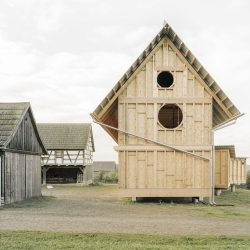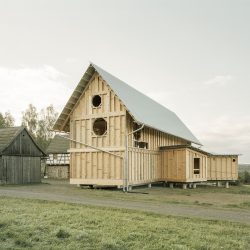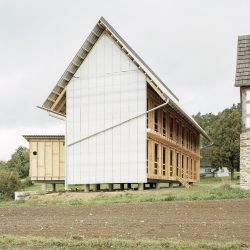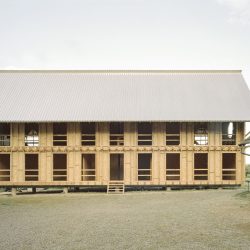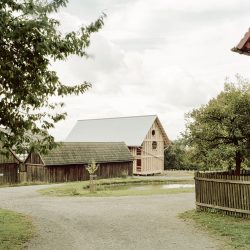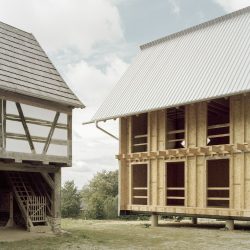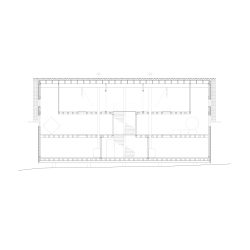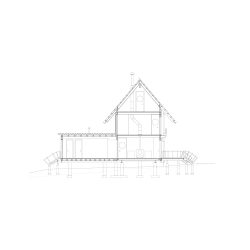
Jun.-Prof. M. O. Zitzelsberger RPTU Kaiserslautern-Landau . photos: © Sebastian Schels
The basis for this building is a research project at the Department of Tectonics in Timber Construction at the Technical University of Kaiserslautern-Landau in the Department of Architecture.
The new building is located on the grounds of the Freilandmuseum Oberpfalz in Bavaria. It complements a former four-sided farm. The main building had fallen victim to a fire. This is a simple timber frame construction. The wood comes from the nearby forest, was felled in winter, carefully cut on site with a mobile saw and gently dried for more then one year.
Materials are used as sparingly as possible. For example, due to the above-average quality of the wood, it was possible to significantly reduce the cross-sections of the load-bearing squared timbers. The building was elevated and sits on a few concrete foundation necks. Ultimately, this also made it possible to keep the necessary amount of concrete to a minimum.
However, the elevation of the building is not only an issue of sustainable building construction. It is also an architectural theme. The replacement building is based on the form of the burnt-down historic farmhouse, but also breaks and alienates it at crucial points.
The original object was built of heavy stone and brick. It was developed over many generations and gradually changed its appearance over the decades. The result was a building with various extensions. This situation is now being artificially re-established, but in a much more abstract way.
The new building is no longer heavy and sits firmly on the ground. It is lightweight and hovers above its original location. The floor plan is typologically completely different and is clearly oriented towards the new use as a seminar building for environmental education. The peculiar extension is still reminiscent of the quirky extensions of the previous building, but does not try to imitate them.
The Learning House for Environmental Education in the Freilandmuseum Oberpfalz is also a counter- project to the usual prestige buildings of German open-air museums, which unnecessarily celebrate the wasteful consumption of materials, resources and space. You could even call it an “anti-project” at all. For example, there is no schedule. Construction is carried out simply when materials and capacities are available.
_
Project managers: Jun.-Prof. Max Otto Zitzelsberger, Rheinland-Pfälzische Technische Universität Kaiserslautern-Landau; Mitarbeit: Eugen Happacher, Jonas Maczioschek
Client: Freilandmuseum Oberpfalz, Museum Director Dr. Tobias Hammerl

